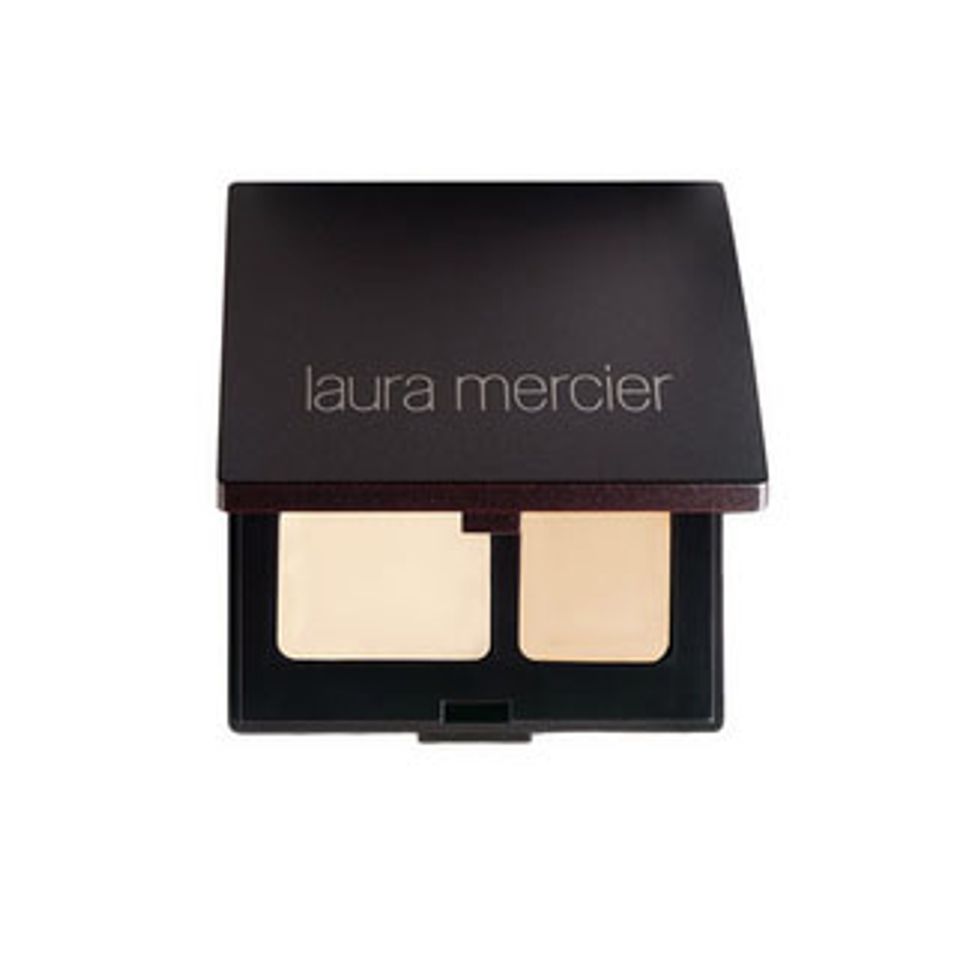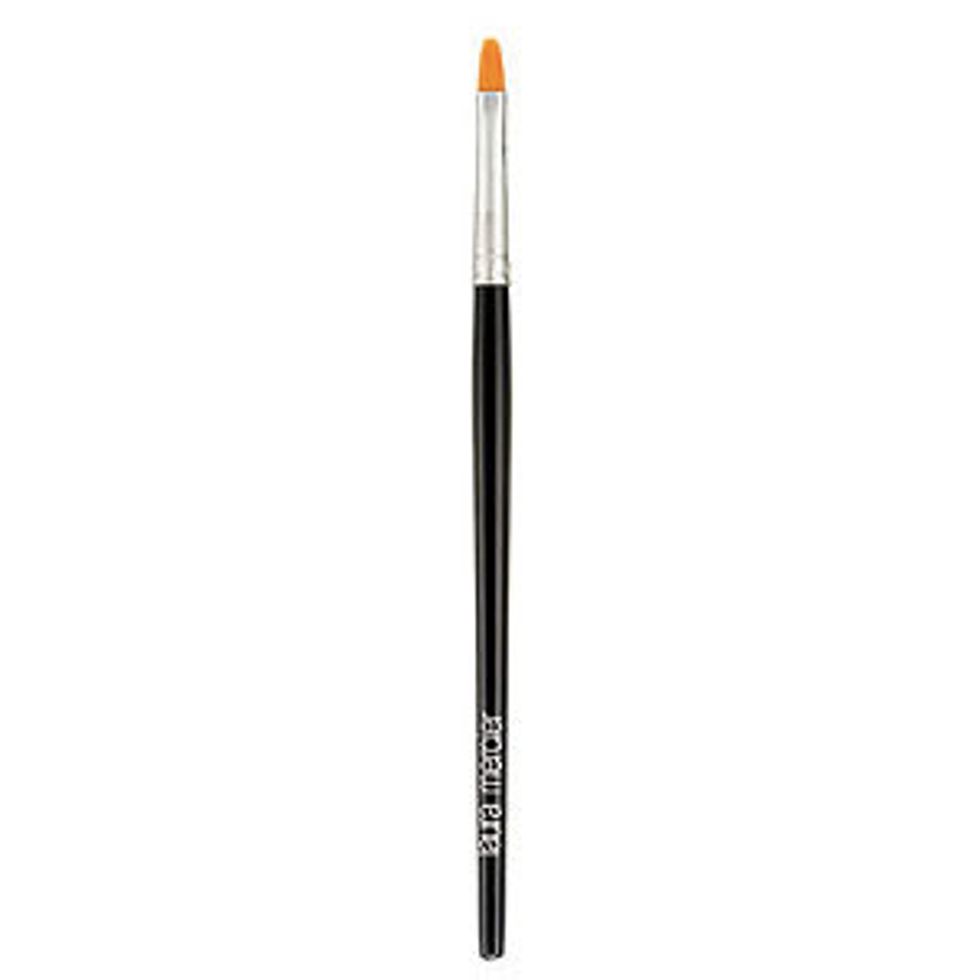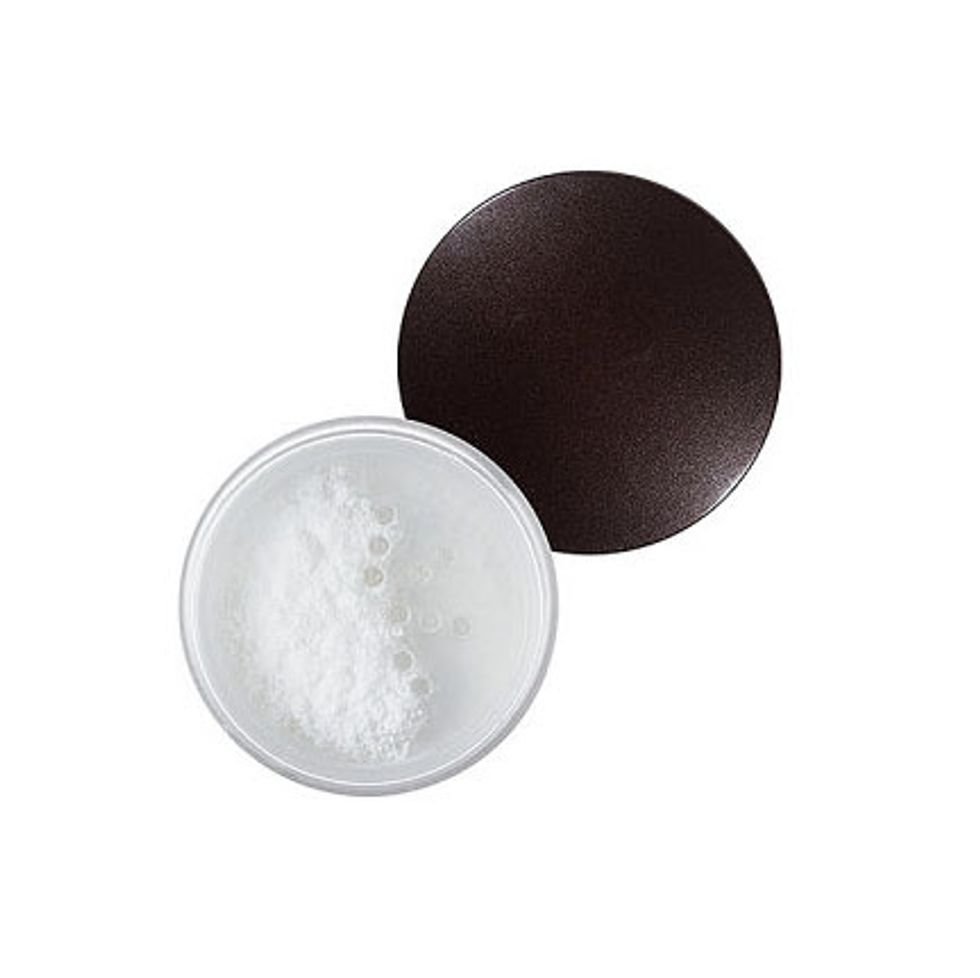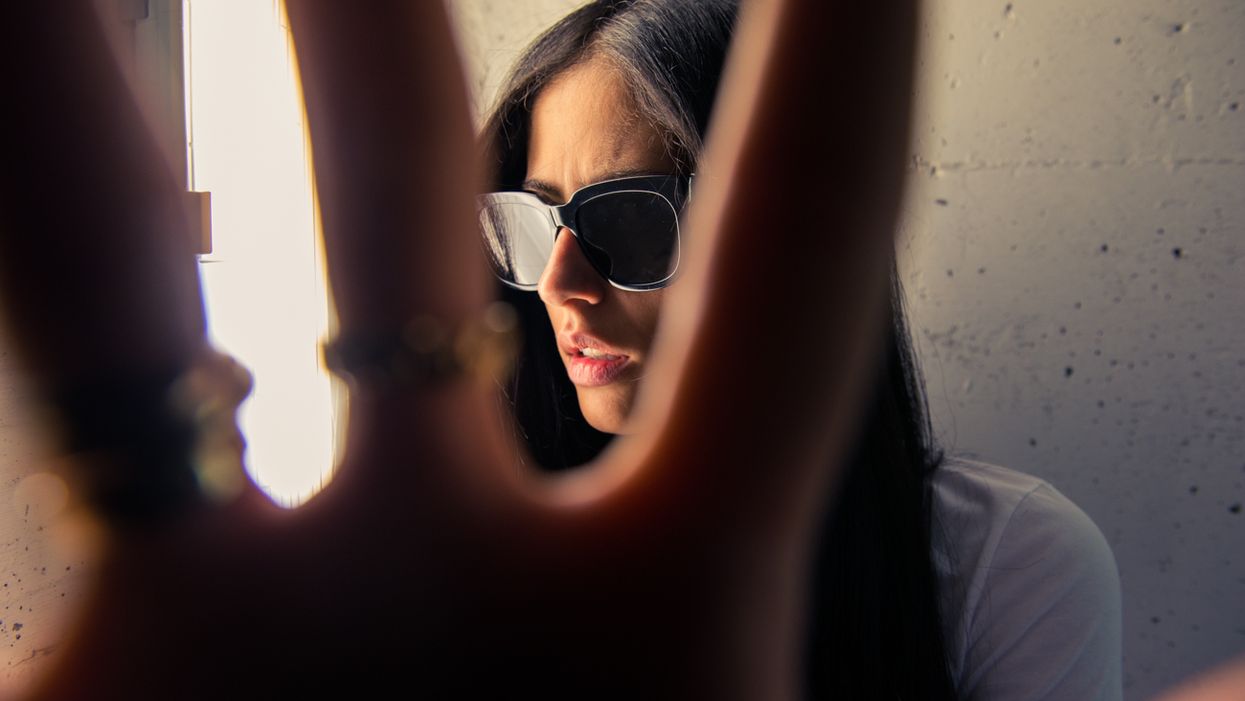
This is usually how our bad days start. We wake up a half hour past the FIRST time our alarm goes off (great!), race to the bathroom to get ready, only to realize when our eyes finally focus that there’s a hot, throbbing mound on the edge of our chin that’s manifested overnight (double great!). Fast forward 20-minutes to us still trying to figure out how we’re possibly going to cover up the gradually intensifying redness of our own personal volcano and the impending…brace yourselves… pop. Vom.
Let’s face it, as much as we’ve heard it a million times over (don’t touch it!), our track record for dealing with a zit always ends in a bit of a skin disaster. In lieu of repeating history, we got hold of a dermatologist, holistic counselor, and a makeup artist to get the real deal on how to cover it up to the point of non-detection and heal pimples ASAP.
The Holistic Approach
From S.W. Basics founder and holistic councillor, Adina Grigore.

Hands off
“Don't. Touch. Keep your dirty hands off of your face. This is more important than anything else. Rinse with water or a gentle cleanser, and then resist every urge to pick, unless you want the healing process to take three to four times as long.”
Skip the Exfoliator
“Avoid picking and touching, you will only add bacteria and cause irritation (which turns into inflammation and more redness). Avoid scrubbing too—skip the exfoliant and intense ‘performance’ products. Give your skin time to heal.”
—DIY TREATMENTS—
1.
Salt
“Fine-grain sea salt is especially great for acne or quick treatments during flare-ups. It can be used on the face or body, and cleans deeply, removes dead skin cells, eliminates fluid retention, balances moisture, pulls toxins from pores, and relaxes muscles. Most sea salts are high in magnesium, potassium, calcium, and bromine. The simplest way to use sea salt is to wet your skin, put some salt on your wet hand so it sticks, then pat it gently onto your skin. You can leave it for a few minutes or rinse immediately. Just make sure not to scrub too hard—it is too abrasive by itself.”
2.
Apple Cider Vinegar
“Apple cider vinegar is the best astringent in nature because it helps to balance your skin’s pH, making you both less oily and less dry. Plus, it promotes blood circulation and kills bacteria, yeasts, and viruses. Always dilute apple cider vinegar! It is pungent stuff. I recommend using a mixture of one part vinegar to four parts water. Apply to your face with cotton or a spritzer. No need to wash it off.”
3.
Baking Soda
“Baking soda is a great spot treatment, toothpaste ingredient, deep cleanser for getting rid of shampoo buildup in hair, and odor fighter (think foot scrub!). You may have heard of the old remedy of putting toothpaste on a blemish. The baking soda in old-fashioned toothpaste was the active ingredient that made it work. The best way to use baking soda is as a once-in-a-while zit treatment. Make a paste with water and dab it on a blemish. Or spread onto a stinky area, leave on for however long you’d like (even overnight), then rinse.”
A Dermatologist’s POV
From cosmetic dermatologist and co-founder of W3LL People, Renée Snyder M.D.
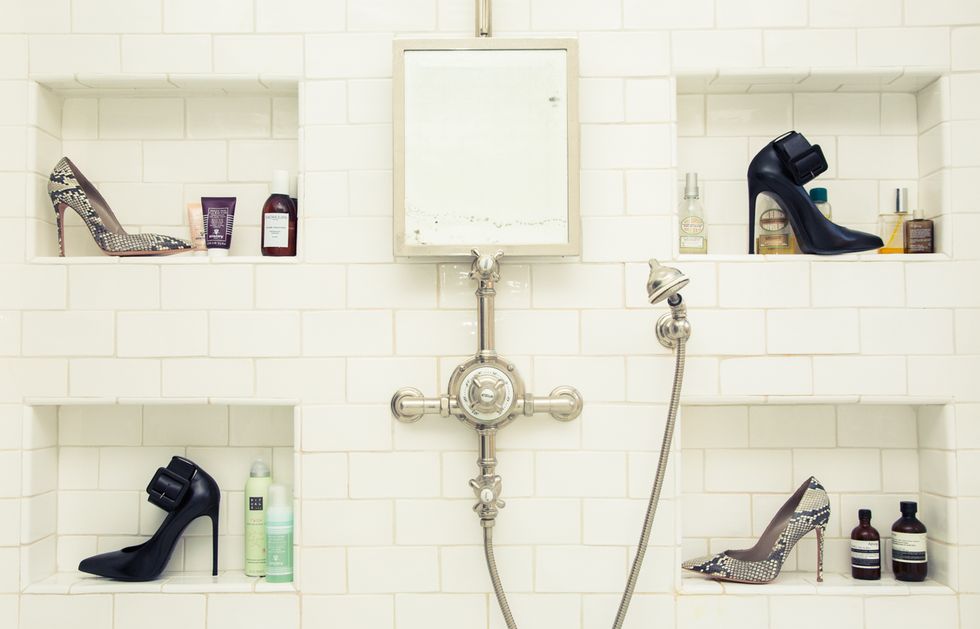
Cold > Hot
“You should apply ice if you feel a pimple coming on. This will stop the inflammation and make the pimple not become so large. Some people promote heat, you should only apply heat when you want it to come to a head. Generally, when my patients feel one coming on they want it to go down and not come out.”
DIY Cures
“I have some patients that will crush up an aspirin and make a paste with it. It's a great emergency remedy that anyone can do. Also, natural, raw, unprocessed, unheated honey, which is antibacterial, can also be applied for 15 minutes to the acne lesions daily. Some, not all people, will respond to this at-home remedy.”
Get Rid of the Redness
“Visine is great as it contains an ingredient that helps to contract the blood vessels that are superficial and give a pimple the red appearance. But their effect is temporary and not curative of the problem, which is a blocked pore with excess oil.”
The Myths
“Stay clear of moisturizers, creams or anything with increased oil that will make true acneic skin worse.
Red apple cider vinegar can easily burn the skin if not careful. I caution my patients in using this as an acne treatment.
Toothpaste only works, or rather helps, to dry out the pimple in short contact therapy doses—about 15 minutes. If left on longer it will burn your skin.”
Don’t Pick. No Really.
“Any type of mashing, picking or squeezing of the skin before it is a head is discouraged. What inevitably happens when the skin is mashed, is that the sebum or what others think is the pus of the pimple, goes deeper into the skin, which will become more inflamed. Manipulating the skin above the pimple just causes a scratch or an erosion that ends up making the lesion last much longer—two weeks vs. 4 days.”
The Products
“I personally prefer non-comedogenic mineral makeup free from bismuth oxychloride and dimethicone because it is the ‘cleanest’ and allows skin to breath without further trapping acne causing oil and bacteria. Specifically, I recommend W3LL PEOPLE Altruist Foundation Powder for my acneic patients, as it includes a therapeutic dose of organic aloe, green tea and chamomile designed to soothe and heal inflammation. For my patients with highly acneic skin, I recommend avoiding conventional liquid foundations, BB and/or CC creams. These emulsions are often formulated to be thick for coverage purposes, which can exacerbate already congested pores.”
The Cover Up
From makeup artist Gina Daddona

"The best way to cover a blemish with makeup is to apply your foundation as you normally do to your face. Using a small concealer brush and a wax based, less creamy concealer that doesn't move easily, apply just to the blemish. The key is to use very little and with a light touch initially. You can build up in small layers to cover. Make sure it is blended in and then set with a translucent loose powder.
My favorite products are Laura Mercier Secret Camouflage, Secret Camouflage brush, and her translucent loose powder."
FYI
"Stay away from heavy layers of full foundation and don't apply a lot of red and pink colors to face, unless you have successfully covered up blemishes. These tones can accentuate the redness of your pimple."

